My blog is going to be pretty Equus-centric for the next few weeks, but for today we’re going to press pause on that so I can share this guest post from K. Bird Lincoln. I met her when she submitted a manuscript to WWP that I just had to have. I’d have never even thought to put ‘Urban fantasy that uses mythology beyond the usual vampire/werewolf variety’ on an editorial wish list but Dream Eater was all the things I wanted from an urban fantasy.
This post isn’t about her book, but the main character of Dream Eater is biracial so the connection is there 😉
5 Picture Books touching on Biracial Asian Identity You Should Read to your Children—and Make Me Cry
by K. Bird Lincoln
Ariana Miyamoto was crowned Miss Universe Japan in 2015. She’s biracial. This was a big deal—since for many Japanese folks, being Japanese encompasses both race and culture. Take the Zainichi Koreans, they’re still treated as non-Japanese by many although through my U.S. eyes and ears there’s no way for me to tell them apart.
It’s hard for many Americans to understand this view of nationality without a bit of extra thinking. I mean, imagine if Irish Americans, despite living in the U.S. almost their whole lives, were treated as second class citizens…oh wait, yeah that actually happened.
 Anyway, back to Ms. Miyamoto. According to a New York times report, she frequently gets asked ‘What part of you is most like a Japanese?’
Anyway, back to Ms. Miyamoto. According to a New York times report, she frequently gets asked ‘What part of you is most like a Japanese?’
What kind of a question is that? How do you even answer that graciously? (Apparently Ms. Miyamoto says “I am Japanese”)
I mean all the erroneous and bigoted assumptions underlying that question! I’ll tell you what kind of question that is…it’s the kind of question that I worried about my own children encountering if Tokyo Boy and I decided to live in Japan. For economic/job-related ones we didn’t end up in Japan, but as an outsider/geek/nerd myself, I think I was hyper-sensitive to the possibility my daughters might have to deal daily with outsider status.
They still have to deal with being biracial here in the U.S., especially after moving from diverse Portland, OR to more or less whitebread Minnesota Prairie. But hopefully, the issues here are a bit easier to work through. I recommend Half and Half as book with a variety of perspectives/races addressing this issue through personal experience. Or, if you’re like me and prefer narrative-driven treatments of major issues, I recommend Jamie Ford’s Hotel on the Corner of Bitter and Sweet as a particularly telling tale about Asians and U.S. History.
When my first daughter was a baby (so live over a decade ago), I was teaching at an international university in Chiba Prefecture and taking an online course in multimedia. We had to design a website as part of our final for the class. I created a resource for multi-cultural U.S./Japanese families (somewhat outdated now) for baby’s bedtime. Here are the children’s books that I found that touched on some of the experiences that I knew my daughter might encounter. But the books are great for children of any background or social class growing up in the states to have a wider appreciation for the world.
And great for grandparents for the same reason. And many of them I can’t read out loud because they will make me cry—both for the beauty of the tender diversity portrayed and for the sadness that there is a sense of otherness at all.
 Two Mrs. Gibsons
Two Mrs. Gibsons
Toyomi Igus and Daryl Wells
Children’s Book Press
This book portrays a Japanese mother living in the home of her African American mother-in-law. It compares cooking, clothes, and lifestyles from the perspective of the child. It never fails to make me cry when we get to the ending: “They were very different, but they had a lot in common. They both loved my father and they both loved me.”
 How My Parents Learned to Eat
How My Parents Learned to Eat
Ina R. Friedman and Allen Say
Houghton Mifflin
Okay, this book doesn’t have the most engaging illustrations. Also, it has a very simplistic view of some things (American sailor trying to eat sukiyaki with chopsticks without mention of the touchy cultural and political situation a relationship between an American G.I. and a Japanese woman would have had back then), but I like it because once again it’s a story told by a child who takes for granted that people are different and do things differently without making too big of a deal about it.
 Bon Odori Dancer
Bon Odori Dancer
Karen Kawamoto McCoy and Caroline Yao
Polychrome Publishing
The book has beautiful illustrations. The portrayal of a Japanese/American girl with a bunch of other ethnically varied (different colored hair abounds) girls learning a traditional Japanese Obon dance in the U.S. in a matter-of-fact way really appealed to me. It’s a story about a girl and her love of dance rather than a big deal about identity.
 The Wakame Gatherers
The Wakame Gatherers
Holly Thompson and Kazumi Wilds
Shen’s Books
I never fail to geta tight throat and wet eyes reading this booki. It’s the story of Nanami-chan, and the day she goes with her grandma and ba-chan to the beach to gather wakame. She has to translate, forgets to speak the right language to the right person sometimes, and also touches on feelings left over from World War II. Excellent, excellent book. This one is always especially meaningful to us because the father is Japanese! (Check out author Holly Thompson’s excellent explorations of identity in her YA fiction as well like “The Language Inside”)
 Yoko
Yoko
Rosemary Wells
Hyperion Books
Rosemary Wells is beloved for Max and Ruby, but what a pleasant surprise for me to find this tale of a little girl (well, cat) who is ridiculed by her schoolmates when she brings sushi for lunch. Ouch. A little close to the bone, there? How many conversations have I had with other bicultural moms about this very topic? Either too American lunches at Japanese school, or too Japanese lunches at American school. I like this book because the mom is clueless, and while the teacher wants to help by starting an “international day”, there is no real solution to Yoko’s problem. She does make a friend, though, when one of the other students is hungry enough to try the sushi, and so things turn out okay.
K. Bird Lincoln is an ESL professional and writer living on the windswept Minnesota Prairie with family and a huge addiction to frou-frou coffee. Also dark chocolate– without which, the world is a howling void. Originally from Cleveland, she has spent more years living on the edges of the Pacific Ocean than in the Midwest. Her speculative short stories are published in various online & paper publications such as Strange Horizons. Her first novel, Tiger Lily, a medieval Japanese fantasy, is available from Amazon. She also writes tasty speculative and YA fiction reviews under the name K. Bird at Goodreads.com and maintains an author page on Facebook.
Her novel, Dream Eater, is about a half-Japanese college student discovering her mythological parentage:

Find it Online:
World Weaver Press
Amazon
Barnes and Noble
iTunes/Apple iBooks
Kobo




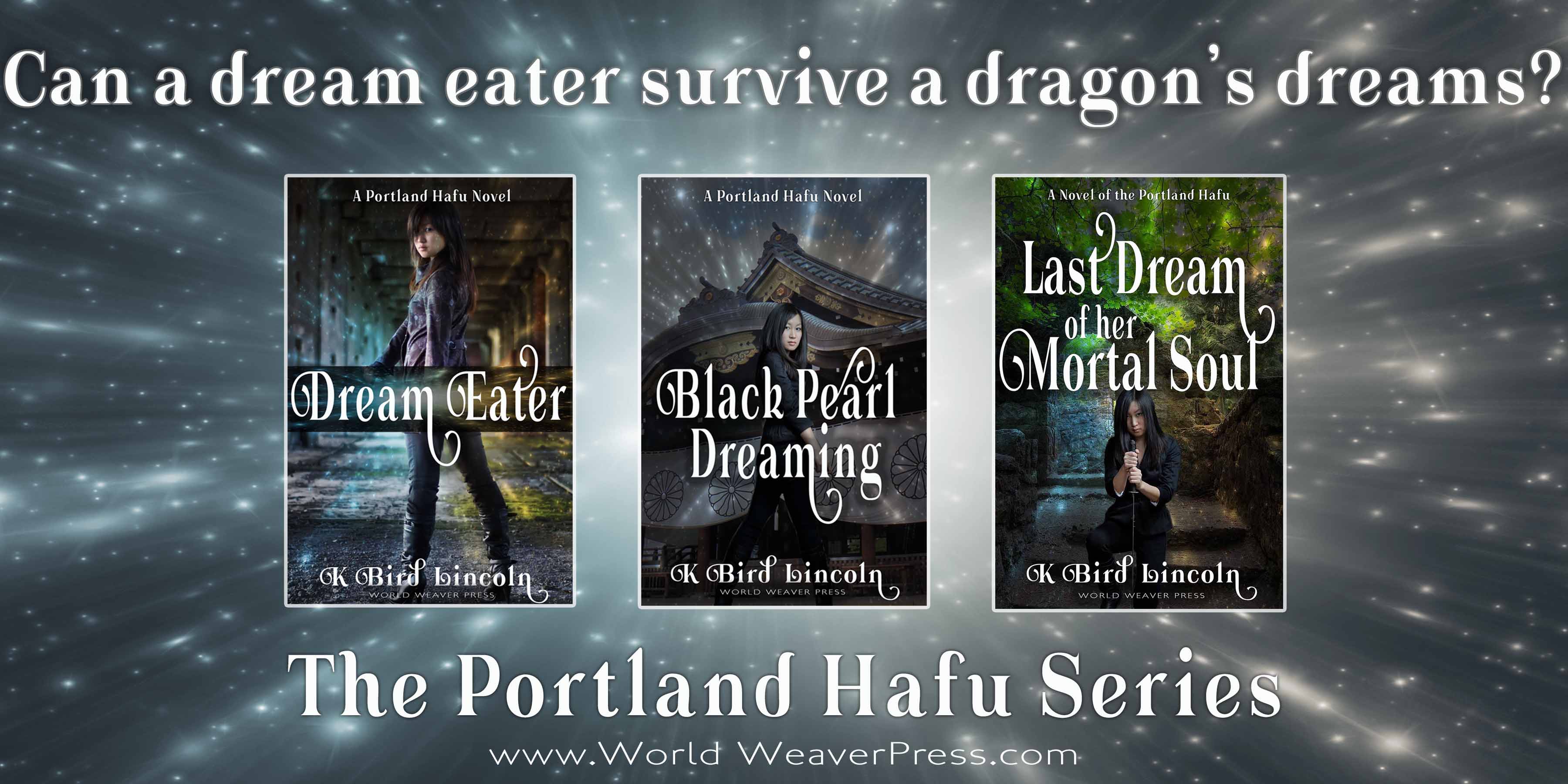




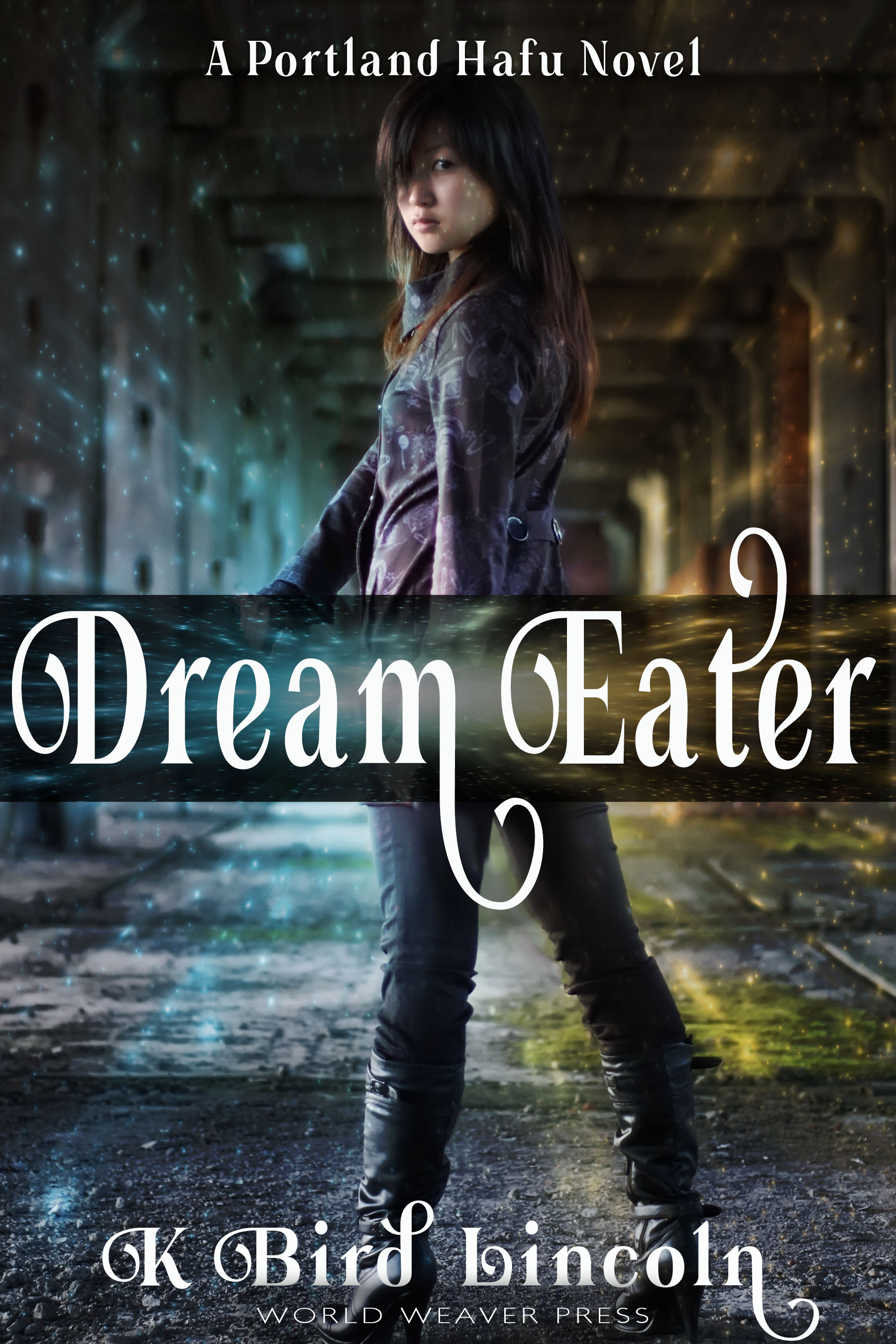









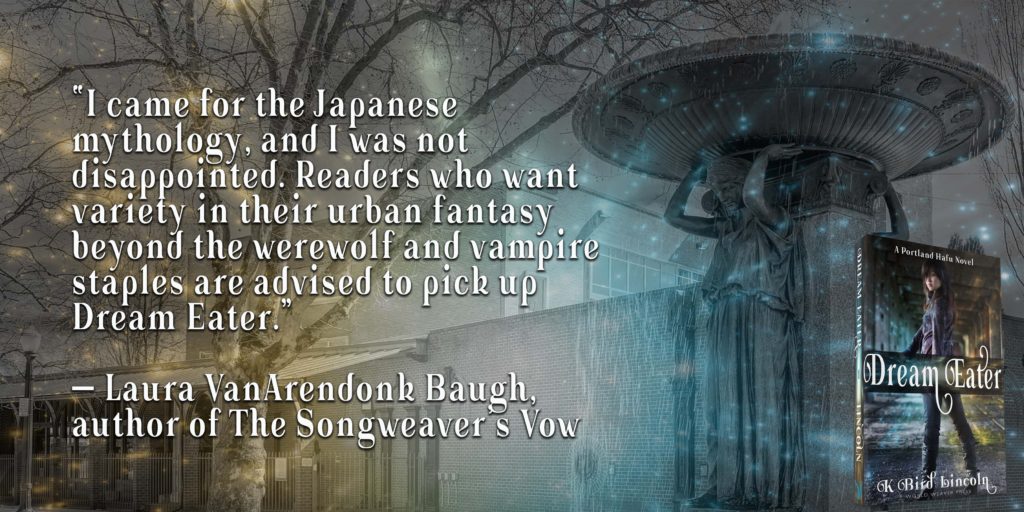
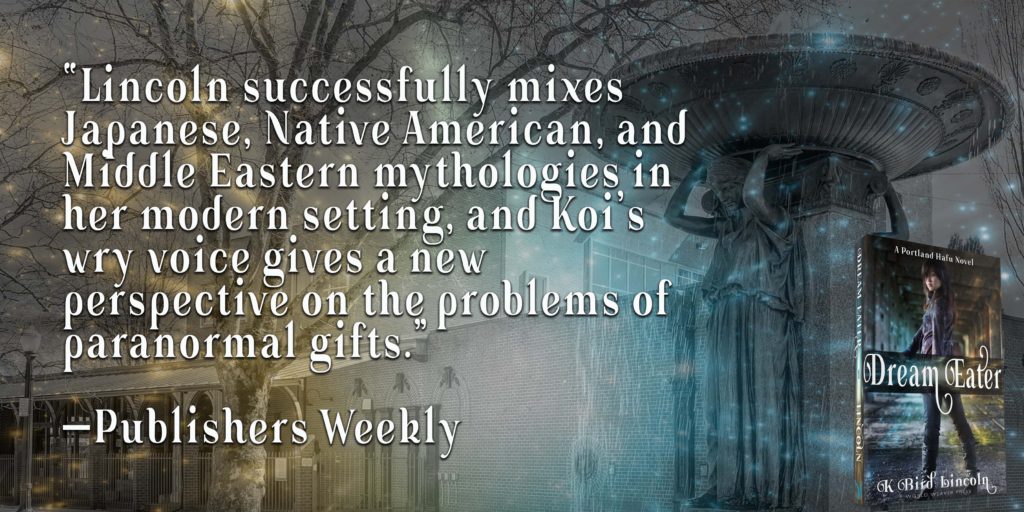
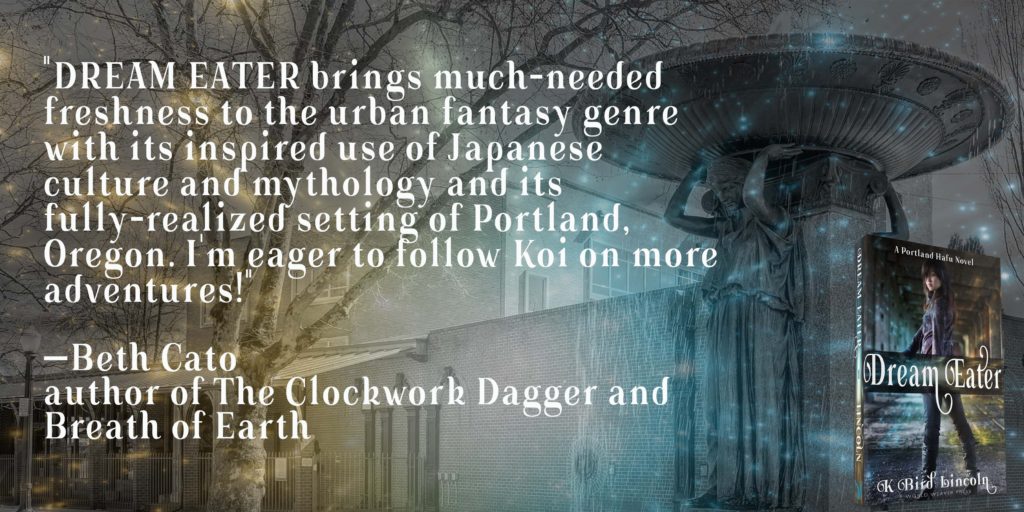

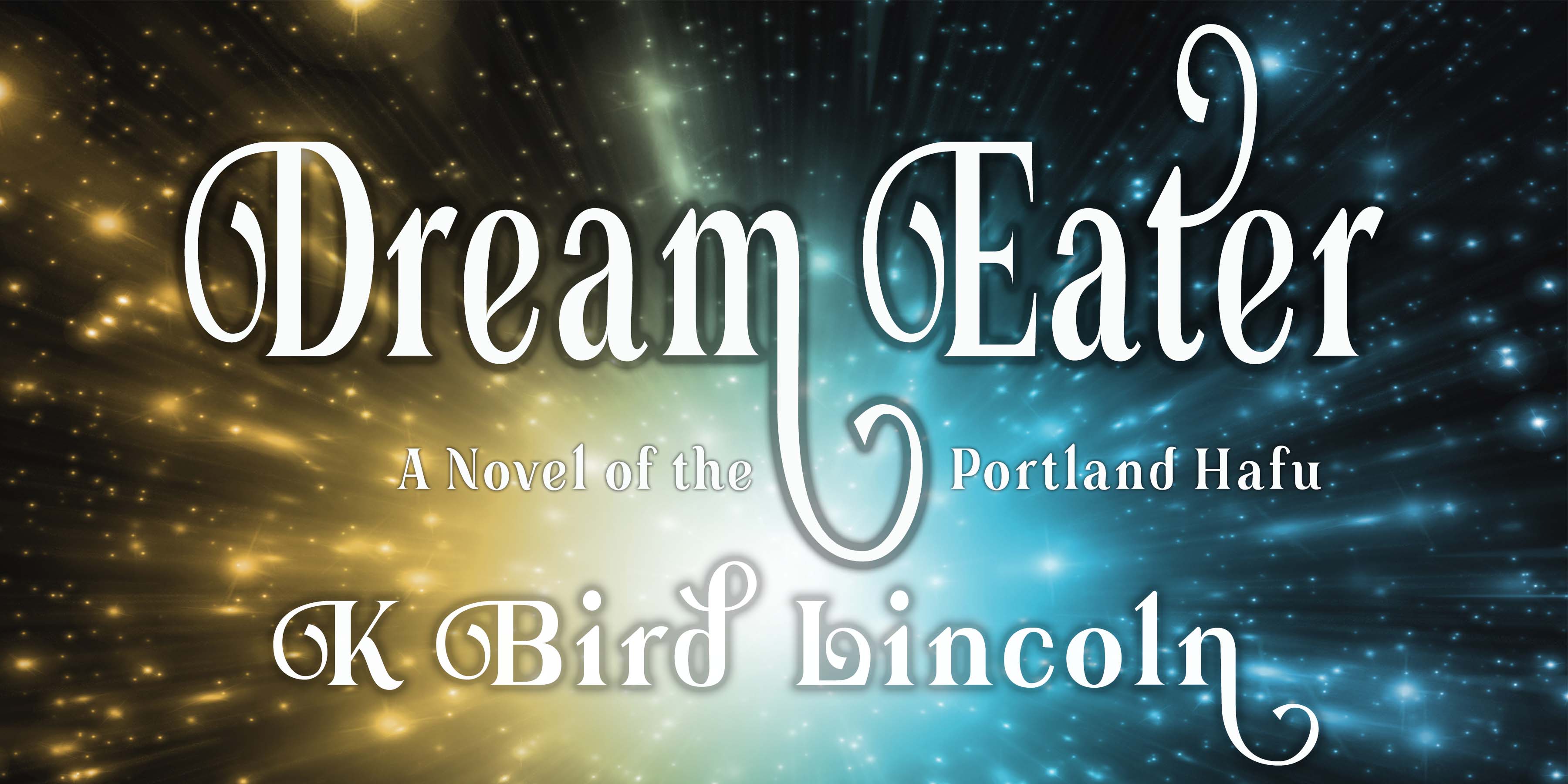

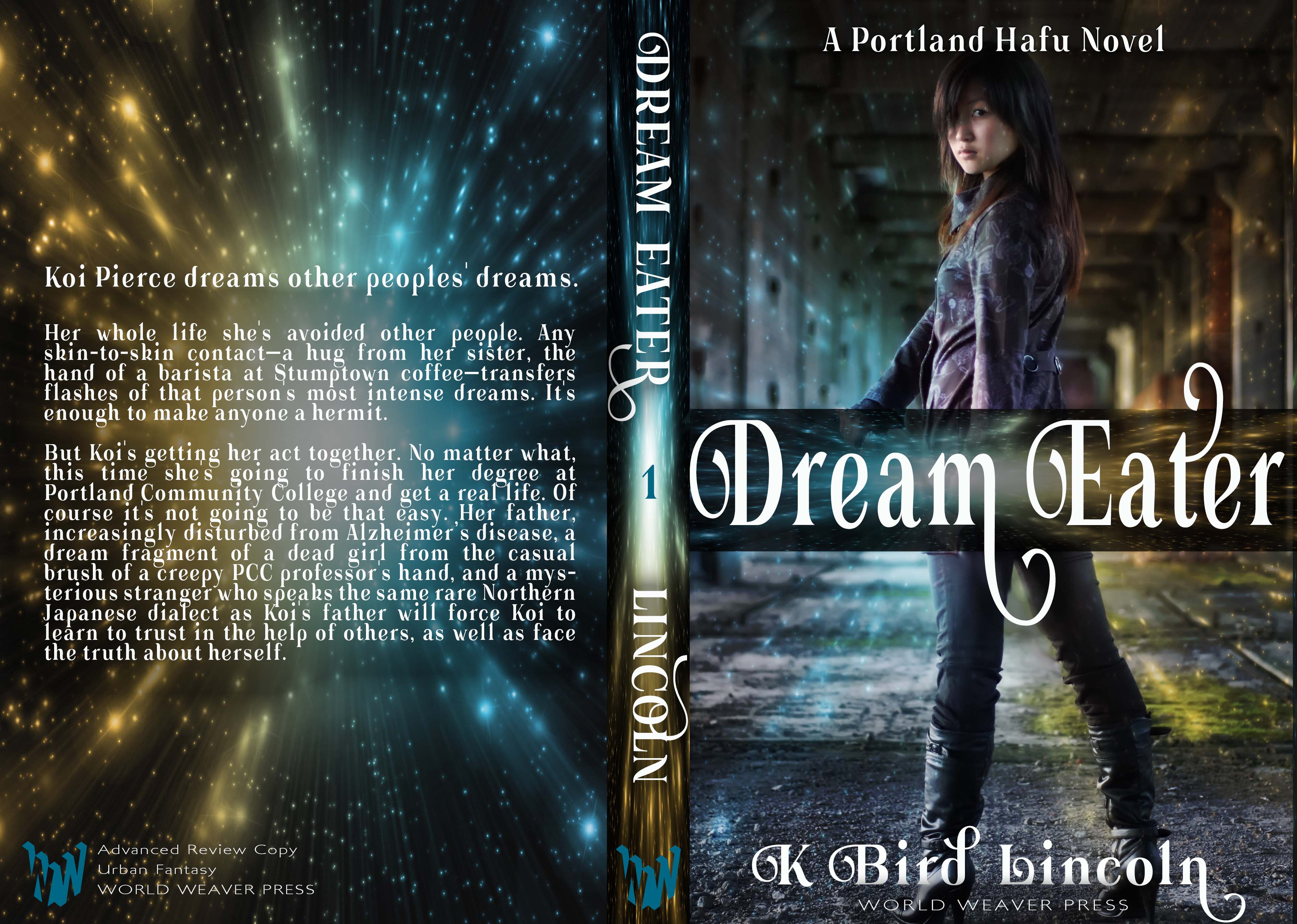
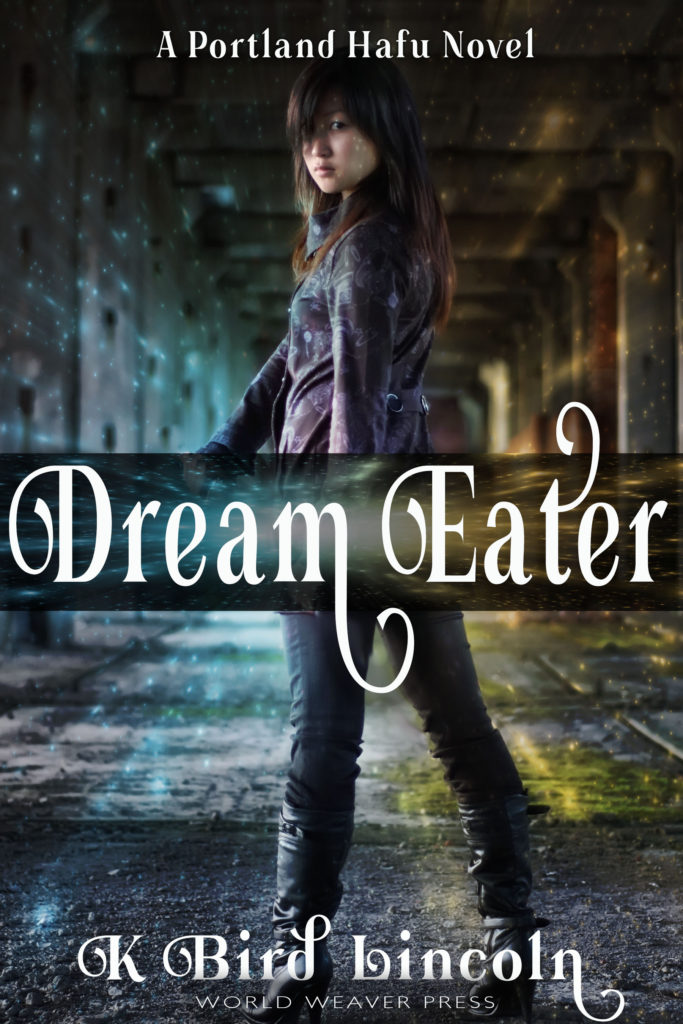
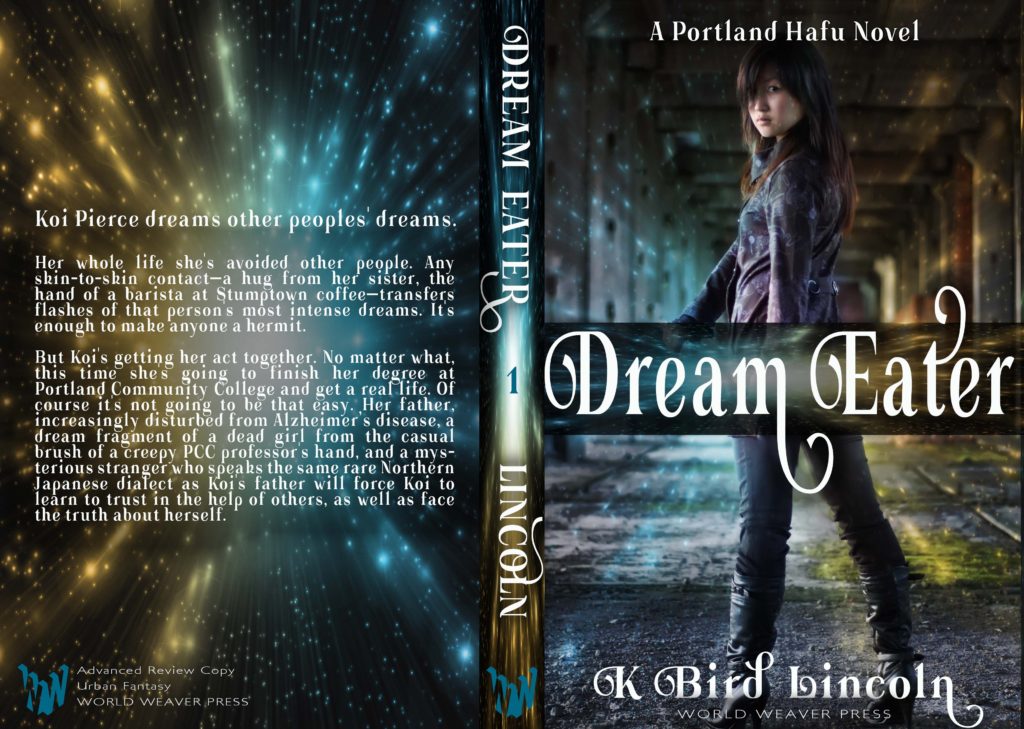
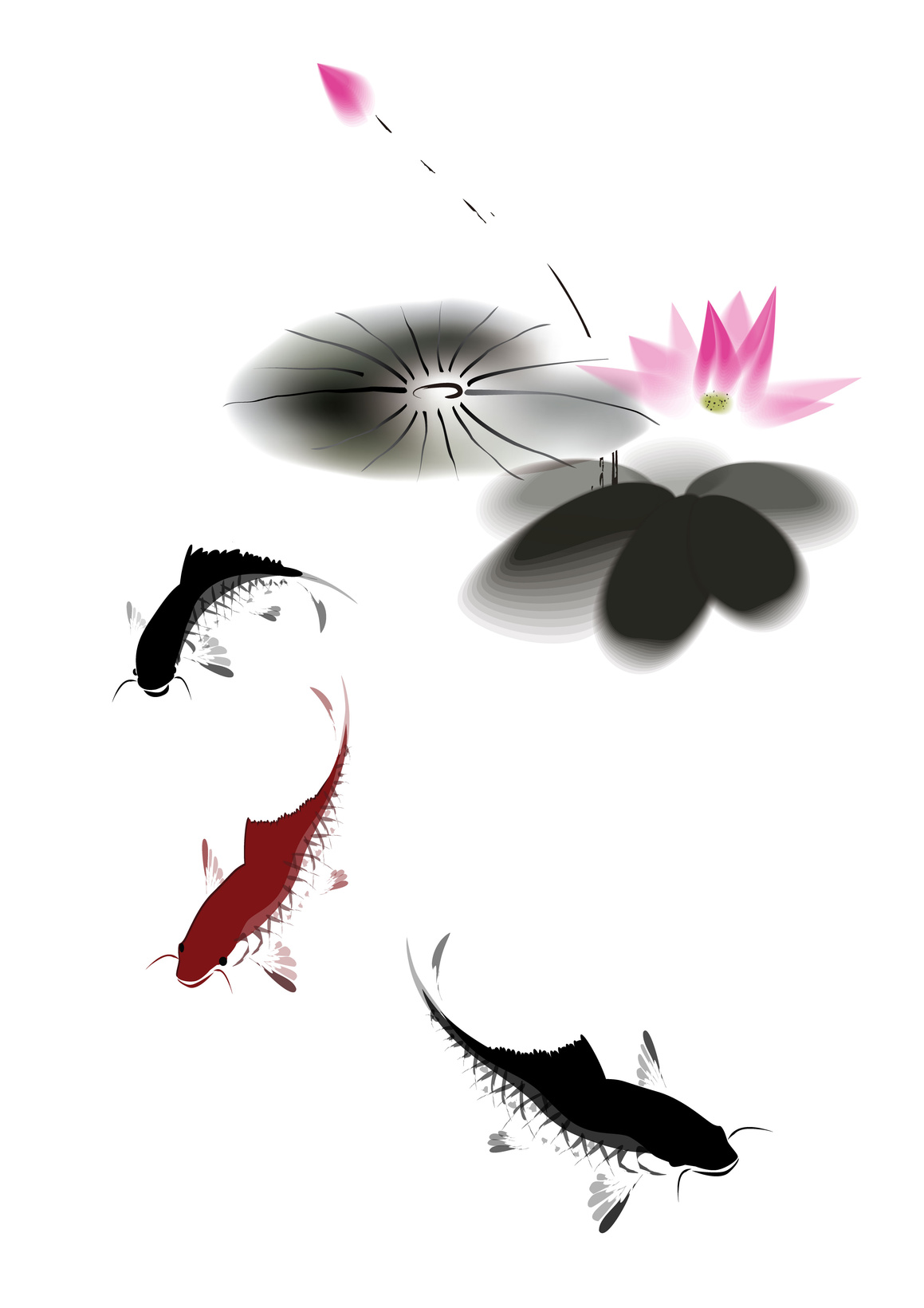
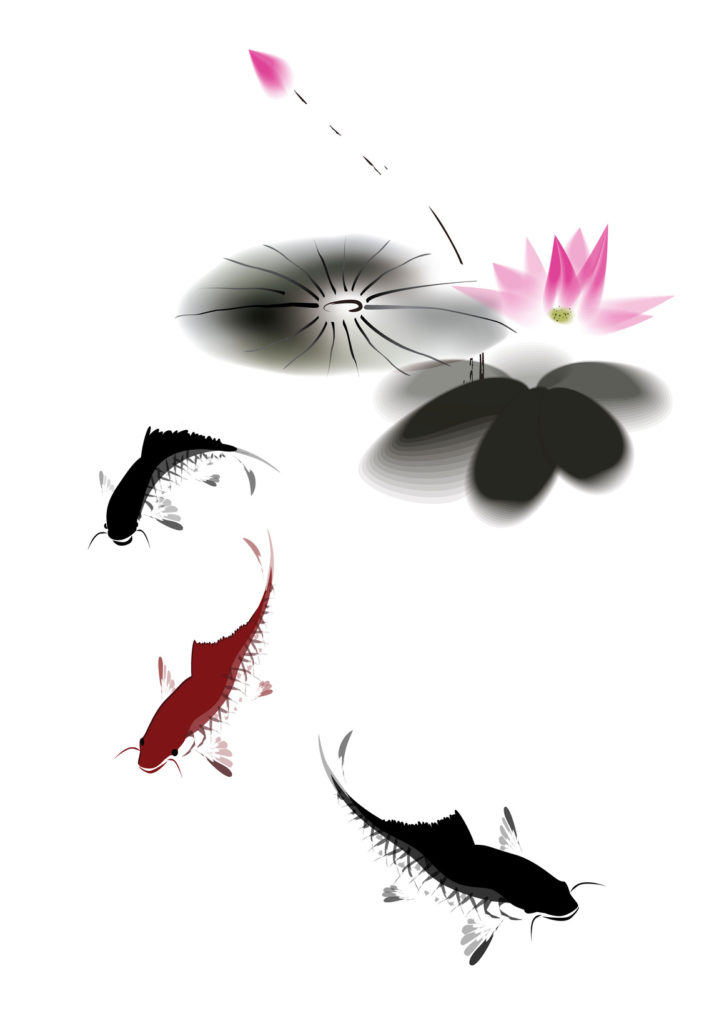 I’m not sure that I blogged about it when it happened, but a few months ago my role at World Weaver Press expanded from Anthologist to include a new spiffy Assistant Editor title, and today I get to announce the first book I have acquired for them in that role. You are going to love this book. No. Seriously. It’s amazing. It’s got–well, maybe before I tell you what its got, I should tell you what it’s called 🙂
I’m not sure that I blogged about it when it happened, but a few months ago my role at World Weaver Press expanded from Anthologist to include a new spiffy Assistant Editor title, and today I get to announce the first book I have acquired for them in that role. You are going to love this book. No. Seriously. It’s amazing. It’s got–well, maybe before I tell you what its got, I should tell you what it’s called 🙂